Mind-Body-Spirit: Daaji’s Davaa
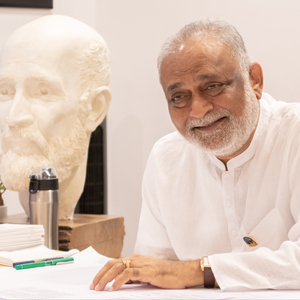
As Kamleshbhai Patel, a successful entrepreneur in New Jersey, he built a chain of pharmacies in the 1980s, selling davaa (medicine) for the body. Now, fondly called “Daaji,” he is the Global Guide for the Heartfulness Institute and freely shares “medicine” for the spirit in the form of meditation. In our interview, Daaji offers his insights on family life, youth, meditation, spirituality, and his recently released book, Spiritual Anatomy: Meditation, Chakras, and the Journey to the Center.
Even prior to landing on the U.S. shores in 1981, even prior to graduating in pharmacy in Ahmedabad, Kamleshbhai Patel already had a brief tryst with monkhood. The seeds of a spiritual journey were strong early in his life—so much so that in his teens, he left home to become a sadhu. But destiny intervened, and a senior sadhu guided him back to the life of a grihastha (householder).
During his college days, Kamleshbhai was introduced to the sahaj marg meditation offered by the Shri Ram Chandra Mission. His guide was none other than the founder of the Mission. All through his rise as an entrepreneur in New Jersey, he continued his meditation practice, while also holding increasingly responsible roles in the Mission. He became instrumental in the growth of the organization worldwide.
Lovingly called “Daaji” (father’s brother), Kamleshbhai has been leading the global Mission, which is now called The Heartfulness Institute. Headquartered at Kanha Shanti Vanam, a 1400-acre campus in Hyderabad, its meditation center, with a capacity to seat 100,000 people, is billed as the “world’s largest meditation center.”
Following are excerpts from our interview with Daaji. The transcript of the video-call interview has been edited for length and flow.
In recent generations, there has been a shift from joint families and communal life to nuclear families and an individualistic lifestyle. Increasingly, youngsters are choosing to remain single. At the same time, stress, depression, and mental illnesses have become epidemic. What are your thoughts on such a shift towards an increasingly individualistic lifestyle?
The Swiss cheese of freedom that the young are chasing is a mirage. The swipe-right and swipe-left culture will leave them in a place of loneliness and despair. Freedom is only a blessing if it is for positive growth. Not if it is a freedom to destroy yourself.
Regarding the importance of family and community, let me narrate an incident. A few years ago, a young lady from Atlanta came to our center in India. Our families have known each other for a long time, and I have known her since her childhood. She wanted to talk to me about life choices. I asked her when she was planning to get married. “At about 30,” she replied. Knowing she was very fond of her grandmother, I asked her, “Why do you love your grandmother so much?” The young lady’s response was telling: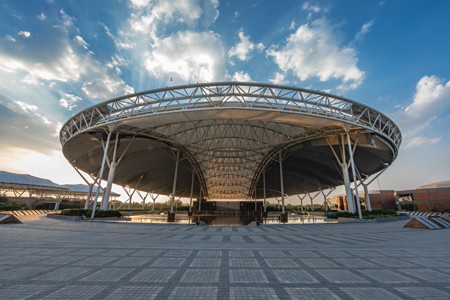 “Because she used to tell me many stories—of her childhood, how she got married, how she spent her life with her husband, how she raised the family, the traditions, the value system, the mythological stories, and so many things. Even the way she would sit silently, offer prayers, and her gentle mannerisms were so graceful and fascinating.”
“Because she used to tell me many stories—of her childhood, how she got married, how she spent her life with her husband, how she raised the family, the traditions, the value system, the mythological stories, and so many things. Even the way she would sit silently, offer prayers, and her gentle mannerisms were so graceful and fascinating.”
Kanha Shanti Vanam, the 1400-acre campus in Hyderabad, is the global headquarters of The Heartfulness Institute.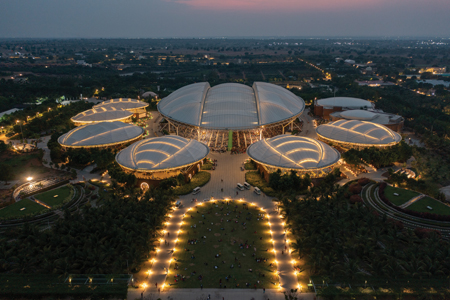
So, I told her: if you marry at 30, it’s likely that when your children grow up, they may be deprived of being with their grandmother; or worse, they may only know their grandparents as aged and ailing. Having grandparents who are relatively young and healthy can make such a big difference in the life of a child. Spending time with the grandparents, traveling with them, sharing the same space with them are all valuable influences.
When you look at the loss of wisdom [from the loss of family and community life], look at what’s happening in the Amazonian forests. The youngsters from the indigenous communities of the Amazon are increasingly moving into cities—which means ancient wisdom is being lost forever as there is no longer a next generation to carry on the wealth of knowledge of the land, the knowledge that was acquired over thousands of years.
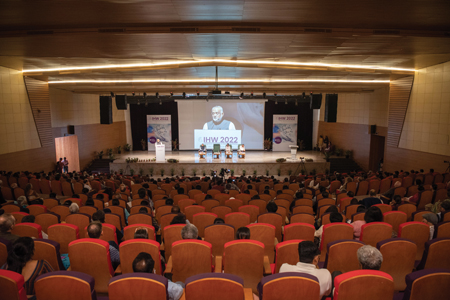
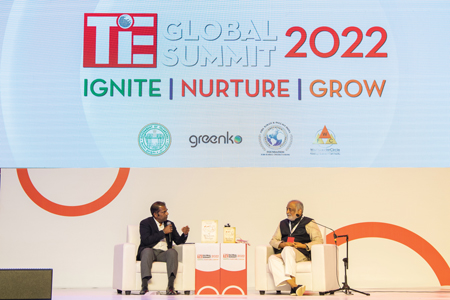
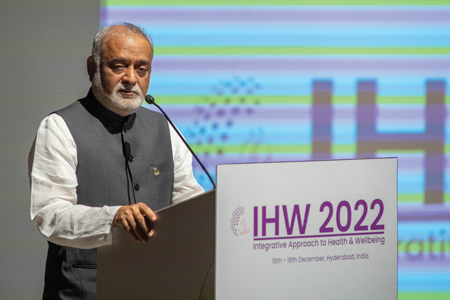 I have seen the positive impact of communities we have built in many cities across India. We have developed residential complexes with a common, communal kitchen. The beauty of such a communal kitchen is that there are multiple cooks and multiple helpers. Housewives don’t have to worry about what to cook, or how to cook. It relieves them of the perennial pressure and creates some space to nurture togetherness in the family. When there is togetherness, it creates the space we need to thrive and [works as] the shock absorber we need to recover from the blows of life.
I have seen the positive impact of communities we have built in many cities across India. We have developed residential complexes with a common, communal kitchen. The beauty of such a communal kitchen is that there are multiple cooks and multiple helpers. Housewives don’t have to worry about what to cook, or how to cook. It relieves them of the perennial pressure and creates some space to nurture togetherness in the family. When there is togetherness, it creates the space we need to thrive and [works as] the shock absorber we need to recover from the blows of life.
With a massive increase in complexity in modern life, youngsters are finding it hard to make career choices. There is an increasing emphasis on doing only what one loves. But that often clashes with the practical realities of making a living. What advice do you have for youngsters who are facing a proliferation of options in career choices?
What children are facing today is an explosion of choices without the framework to know how to make a choice. The result is fickle decisions, temporary focus, and disillusionment.
Daaji frequently speaks at world events on meditation and spirituality.
Choose what is ennobling. Passion is momentary, here today gone tomorrow. Youngsters need to be taught the difference between a passion and a profession. Both are important. Many kids tell me they want to become musicians. I have seen excellent musicians put their caps on the ground and perform at train stations in New York. They rely on the charity of strangers for their next meal. On the flip side, if you become a doctor, pharmacist, engineer, or teacher what can stop you from still pursuing your passions such as music, painting, theater, etc.? So, for worldly choices, be practical.
The ultimate choice is to walk the spiritual path. It doesn’t matter what you do for a living—a cobbler or a farmer or a very successful businessman or a doctor. But at the end of your life, when you are breathing your last, what’s the point if you win everything but lose the plan of your soul? What people regret the most at the end of their lives is not having been their ideal self, not having lived as per their deepest aspirations and authentic purpose. These are revealed in the depths of silence. When you meditate, you listen to the voice within that inspires you to choose the path based on wisdom. It’s a choice we make not once but in every moment of our life. When the heart lights up like this, it reveals your true path.
For a spiritual seeker, how important is it to decide on a particular guru or a particular practice or path versus remaining unaligned and dipping into a variety of wisdom literature and a variety of teachers?
Experiment with the paths that intrigue you. Take notes of your experiences on each path. If something makes you genuinely happy and peaceful, keep it. The language of God is silence, and in that silence, the vibrations of peace are created. And that is a signature sign that you’re doing the right thing.
Do not take up a spiritual practice out of fear or temptation. The inner journey is not a transaction with the divine. It is a journey in love. Spirituality says: approach God for the sake of God. It’s like raindrops falling into the ocean and becoming the ocean. But what if the raindrop is afraid that its existence will be lost? That is the ignorance of the raindrop. The atman has the promise of becoming paramaatma, but it wants to hold on to its own individual existence. That is one of the biggest reasons that we are not able to jump into the ocean. With meditation, you can arrive at purity and simplicity, and merge.
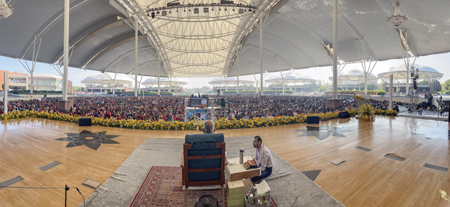
Daaji leading a meditation session.
When an interest in meditation arises in someone’s life, how should they proceed? At the organizational level, there are so many options such as Art of Living, Isha Foundation, Vipassana, etc. Where does Heartfulness fit in? What are the salient distinctions of your method of meditation?
It would not be right for me to comment on other organizations and their practices because I don’t know their practices. I can tell you that we offer a scientific approach. In science, we are brutally honest; and we have to be brutally honest with our experiments also. Practice Vipassana, practice Art of Living, and others. Maintain a journal and see how it is. Then your experience will guide you.
The special feature of Heartfulness meditation is transmission—a powerful state of grace that descends from the cosmic radiant, and that can be experienced in our heart. The proof of the pudding is in the eating.
Your book, Spiritual Anatomy, presupposes a very strong link between one’s emotions and physical sensations. Can it benefit people who do not have a very strong body consciousness? The kind described in the book, such as, for example, when anger happens, it is felt in the chest area, and when there is fear, it is felt in the stomach area.
That’s okay too. It develops over a period of time. Such sensitivity goes hand-in-hand with the ability to tolerate it. Let me explain: suppose, by God’s gift, you develop a sensitivity to read people’s minds. What do you think of such a gift? It may seem incredible, but it will become a curse. Imagine being able to read every evil or hateful thought about you, especially when it comes from your most loved ones. If you don’t have the ability to tolerate certain truths, they better remain hidden. Same thing with the physical vibrations arising out of fear or lust. Sensitivity develops based on our ability to tolerate things more, and then it will also increase our ability to perceive things.
You have described sixteen chakras in your book. If we accept the wisdom and authority of the classical yoga of Patanjali, then why this reinterpretation of the original seven chakras outlined in that system of Kundalini?
Actually, there are millions of chakras within the system. I have mentioned only sixteen, though we have experienced so many during our spiritual journey. Kundalini is not well understood. It is the path of power. A person who is after Brahma, who is in love with God, doesn’t care about powers. What is the use of Kundalini awakening if you’re still filled with desires and arrogance?
Now, coming to the seven chakras. They are, of course, the fundamental chakras. The three lower chakras are common to animals also. What differentiates the animal kingdom from the human kingdom? It is the heart, right? Each one of us is a living atlas carrying the map of higher consciousness within. The map of the 16 chakras allows you to rise to unprecedented levels of consciousness.
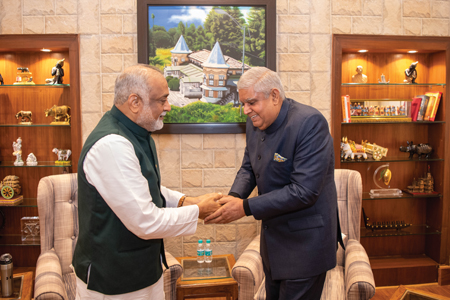 You have explained in your book that both repressing desires as well as indulging them only make matters worse. You say that the only way out is to direct your desire to a higher purpose. But the challenge is that the benefits of such a choice are distant and seem speculative, whereas biting into that pizza or that gulab jamun instantly floods your whole being with euphoria. Sure, we all know that sensory pleasure is fleeting, but it is so visceral and undeniable. In such a moment, how can one choose the higher purpose which is distant and abstract?
You have explained in your book that both repressing desires as well as indulging them only make matters worse. You say that the only way out is to direct your desire to a higher purpose. But the challenge is that the benefits of such a choice are distant and seem speculative, whereas biting into that pizza or that gulab jamun instantly floods your whole being with euphoria. Sure, we all know that sensory pleasure is fleeting, but it is so visceral and undeniable. In such a moment, how can one choose the higher purpose which is distant and abstract?
The higher purpose at a physical level is better health. The highest purpose is God realization— Brahma Vidya—experiencing the ultimate. And this happens very naturally with this heartfulness way of practice.
You have said even the bliss and ecstasy of sat-chit-ananda are a trap. That one must go even beyond that. But why?
The inner journey is to become one with the Ultimate. The trinity of the lover, the beloved, and the love becoming one. The knower, the known, and the knowledge becoming one. Bliss is an experience. And if there is experience, then who is experiencing it? You. Which means individual identity still remains. And until there is the separation of I and Thou, how can the journey be complete?
Also, all experiences, even divine ones, are temporary. But then the next step is to want to become the experience itself. This is quite challenging for most people to understand because they are not aware of the difference between experiencing and becoming.
Let’s say you enjoy the hospitality of a very wealthy friend where you get to spend two or three months on his private island in the Pacific Ocean. What would go through your mind when you return home? “I wish I was as rich!” Even though you enjoyed the experience of being rich for a couple of months, it ended. But to become rich yourself is a different matter.
Experiences come and go. In childhood, we are infatuated with toys; in youth, with romance; and so on. What made us happy at one time, no longer works. So, it is more important to ask the fundamental question: what is it that supports even the highest experiences of bliss and ecstasy? Something that doesn’t come and go. If you can jump into that state, you will understand it as shoonya, a word that could mean “empty,” but it is not so. It is beyond description, beyond the mind. That’s why you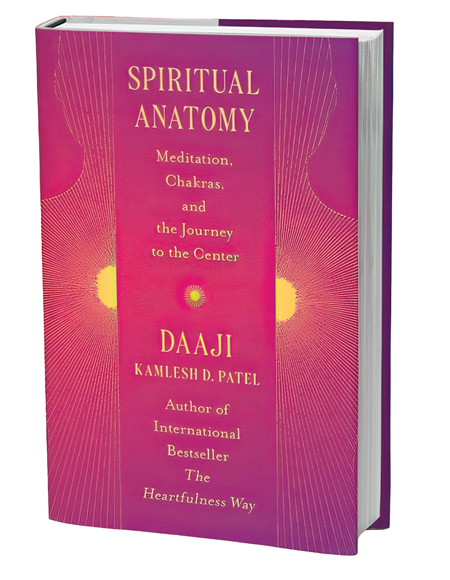 need a guru who can take you there; otherwise, ordinarily one cannot even think that there is something beyond.
need a guru who can take you there; otherwise, ordinarily one cannot even think that there is something beyond.
What would you say to the nondualist who may argue that the whole chakra system described in your book only serves to concretize an illusory mind-body complex? Wouldn’t it be better to inquire into the formless nature of the Self?
Formless nature of the self. It sounds very interesting, but until you experience formlessness, God has given you the form, right? He has embedded himself as an atma within yourself. It’s already a form. The duality is going to remain as long as you don’t become nondual. Even when you offer a prayer, a time will come later on in life—as you advance and reach the pinnacle of spirituality—that you will wonder: to whom am I offering prayers? Am I different from him? Am I not already one with him? Then what is the need for a prayer? What is the need for a form? Or what is the need for a no-form? All these questions will be transcended. We transcend everything that is there. And that’s what shoonya means. When you talk of nothingness, people don’t get it because it’s beyond logic. But once you experience it, then all the problems are solved.
Parthiv N. Parekh is the editor-in-chief of Khabar Magazine.
Enjoyed reading Khabar magazine? Subscribe to Khabar and get a full digital copy of this Indian-American community magazine.
blog comments powered by Disqus










